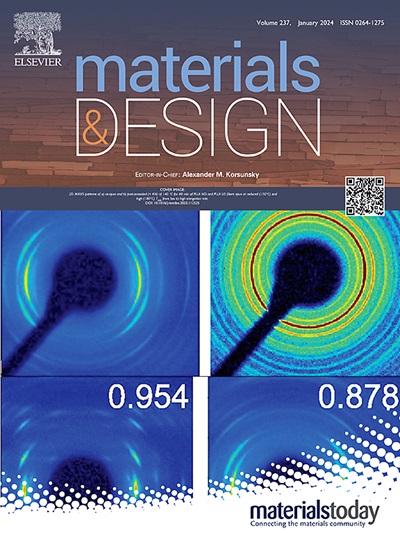Micro-screw extrusion 3D printing of multiscale ternary nanocomposite absorbers – Part I: Comprehensive materials characterization and exceptional microwave absorption performance
IF 7.6
2区 材料科学
Q1 MATERIALS SCIENCE, MULTIDISCIPLINARY
引用次数: 0
Abstract
In the context of structural-functional integration, developing advanced microwave-absorbing resin-based composites is an effective solution to combat electromagnetic pollution in military and civilian applications. The use of nanofillers in immiscible polymer blends has gained significant attention for their superior performance. This research employs micro-screw extrusion 3D printing to create a ternary nanocomposite with multi-walled carbon nanotubes, featuring a multi-scale structure and excellent microwave absorption. Nylon 12 and polypropylene serve as matrix materials. By adjusting the geometric structure and component ratios, efficient electromagnetic wave absorption is achieved. Results show that the selective distribution of MWCNTs enhances the composite’s conductivity and dielectric properties. The screw extrusion process proves advantageous for mass production, multi-material compatibility, and online blending, highlighting the nanocomposite’s potential for electromagnetic wave stealth, shielding, and flexible sensing applications.

求助全文
约1分钟内获得全文
求助全文
来源期刊

Materials & Design
Engineering-Mechanical Engineering
CiteScore
14.30
自引率
7.10%
发文量
1028
审稿时长
85 days
期刊介绍:
Materials and Design is a multi-disciplinary journal that publishes original research reports, review articles, and express communications. The journal focuses on studying the structure and properties of inorganic and organic materials, advancements in synthesis, processing, characterization, and testing, the design of materials and engineering systems, and their applications in technology. It aims to bring together various aspects of materials science, engineering, physics, and chemistry.
The journal explores themes ranging from materials to design and aims to reveal the connections between natural and artificial materials, as well as experiment and modeling. Manuscripts submitted to Materials and Design should contain elements of discovery and surprise, as they often contribute new insights into the architecture and function of matter.
 求助内容:
求助内容: 应助结果提醒方式:
应助结果提醒方式:


